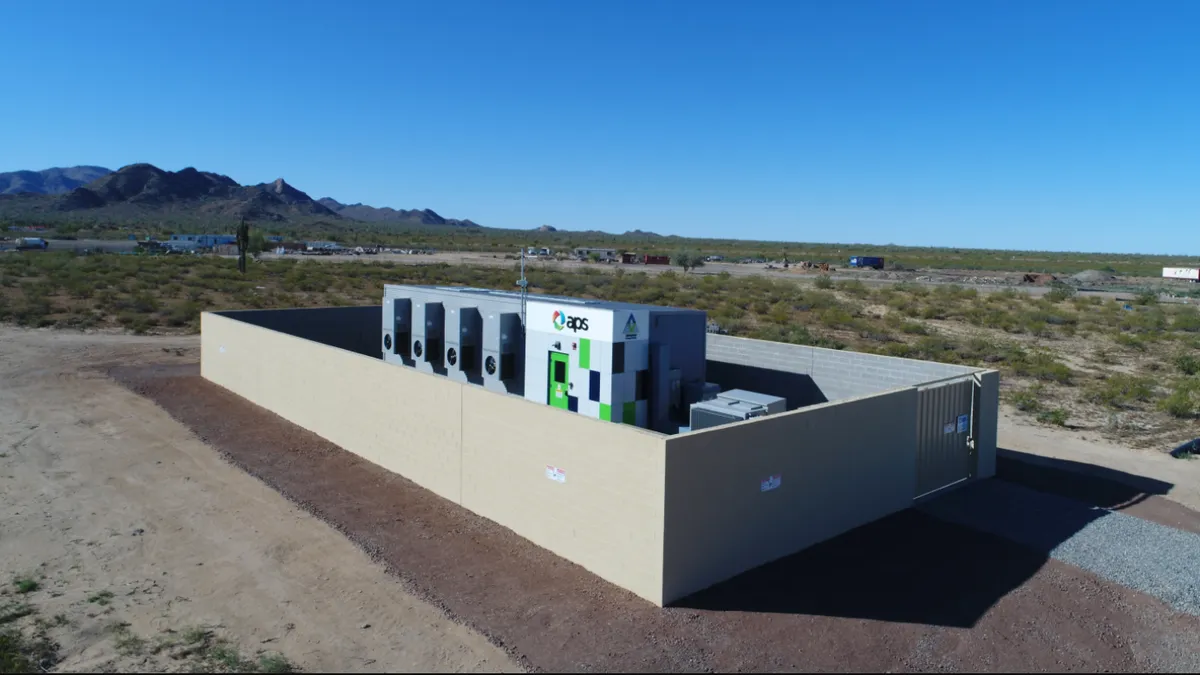There has been a lot of attention on the deployment of energy storage for the deferral of transmission and distribution investments. For Arizona Public Service, it's part of a growing list of storage projects that could allow it to forestall other capital expenditures.
But whether storage is the best alternative depends on a number of factors, including how long the T&D deferral will last.
The basic argument for energy storage T&D deferral is straightforward. Because an array of batteries can be more accurately scaled to meet growing demand, a relatively small battery installation could be used instead of investing in a transmission line upgrade that would have to be oversized to meet demand projections years in the future.
Batteries used this way can either defer a T&D investment for several years or extend the expected life of existing equipment by reducing the peaks the equipment would have to serve. In short, a relatively small amount of energy storage can defer a much larger T&D investment.
Deploying in small increments
Unlike most grid infrastructure, energy storage can be deployed in small, modular increments sited to serve growing demand with limited risk of oversizing or creating stranded assets, Alex Eller, a research analyst at Navigant Research, told Utility Dive. A good example of such a project is Arizona Public Service’s Punkin Center project.
Punkin Center is a town of about 600 people in the Tonto National Forest about 90 miles northeast of Phoenix.
The project, launched this summer, involves a 2 MW, 8 MWh battery array that is being built instead of rebuilding about 20 miles of transmission and distribution lines.
Punkin Center is growing and over time could potentially overload the 21 kV transmission line, Scott Bordenkircher, director of transmission and distribution technology innovation and integration at APS, told Utility Dive.
In the course of looking at the problem, Bordenkircher said APS found it could be cost effective to use batteries rather than investing in a line upgrade. “It will enable us to defer the transmission investment for a considerable amount of time, anywhere from three to six years,” he said.
APS has not disclosed cost comparisons between the battery and T&D investment because it involves details of a confidential contract with AES Energy Storage, which is building the storage facility using its Advancion batteries. But the storage project is “very, very cost effective” and comes in at a cost “slightly lower” than the T&D option, Bordenkircher said.
“It comes down to the best value,” he told Utility Dive. The batteries’ main function — they are due online in either the third or fourth quarter of 2018 — is to reduce overloading on the lines serving Punkin Center, but “we get additional value from frequency regulation and the bolstering of reliability that the batteries will provide.”
In studying the Punkin Center project, APS included proxies to track its internal costs for services such as frequency response and capacity reserves. It also calculated the value of sometimes being able to use negatively priced power from California to charge the batteries. (When the California grid has excess renewable energy, it sometimes causes prices for the California ISO to turn negative, which means the ISO has to pay to balance its market.)
No regulatory mandate
One of the significant features of the Punkin Center project is that APS did it without a regulatory mandate, which is one of the drivers of T&D deferral projects, according to Eller. Non-wires alternatives to traditional utility investments are a key factor in efforts under way in California and New York, where utilities are being encouraged and incentivized to pursue storage projects.
California’s mandate for fast track storage projects to help alleviate potential generation shortfalls in the wake of the methane leaks and subsequent shutdown of the Aliso Canyon gas storage facility is one example.
But unlike neighboring New Mexico, which has amended its 2017 Integrated Resource Plan rules to include energy storage, Arizona regulators have not set a target or mandate for energy storage.
While there is no energy storage mandate in Arizona, “our regulators are very interested in storage,” Bordenkircher said. He also noted that APS is not moving into energy storage on a grand scale. He called Punkin Center an “intermediate size” project, somewhere between small and grid scale.
Not the first project
It is also not APS's first storage project. When considering the Punkin Center project, APS was able to reference its experience with its Solar Partner Program which uses smart inverters and a 4 MW energy storage system to study how to integrate solar onto its grid in high solar penetration areas.
That project has two battery systems — one on the feeder head and the other on the middle of the line. Bordenkircher said that should enable APS to gather real data on how well the system works based on where it sits. “Storage does not fit everywhere,” he said.
But with the expected growth of solar power in Arizona, APS plans to use the data it gathers from its current storage projects as a guide to future initiatives. Bordenkircher said the utility is in the “planning phase” for a project that would place storage assets at various points along an intermediate feeder to provide backup power. It would help handle power quality and potentially forestall some capital expenditures. “It has to prove out,” Bordenkircher said, but it is clear that energy storage, even without a mandate, is part of APS’s planning process.
That doesn’t mean that energy storage options will always cost out. “Like everything else in storage, it depends,” Ravi Manghani, director, energy storage for GTM Research, told Utility Dive. Duration is one of the key factors, duration in the sense of how long the T&D deferral will last.
Deferral projects are typically contracted for three to 10 years, but a project with just three years of guaranteed revenues will likely need an additional value stream compared to one with a 10 year contract,” Manghani said.





















